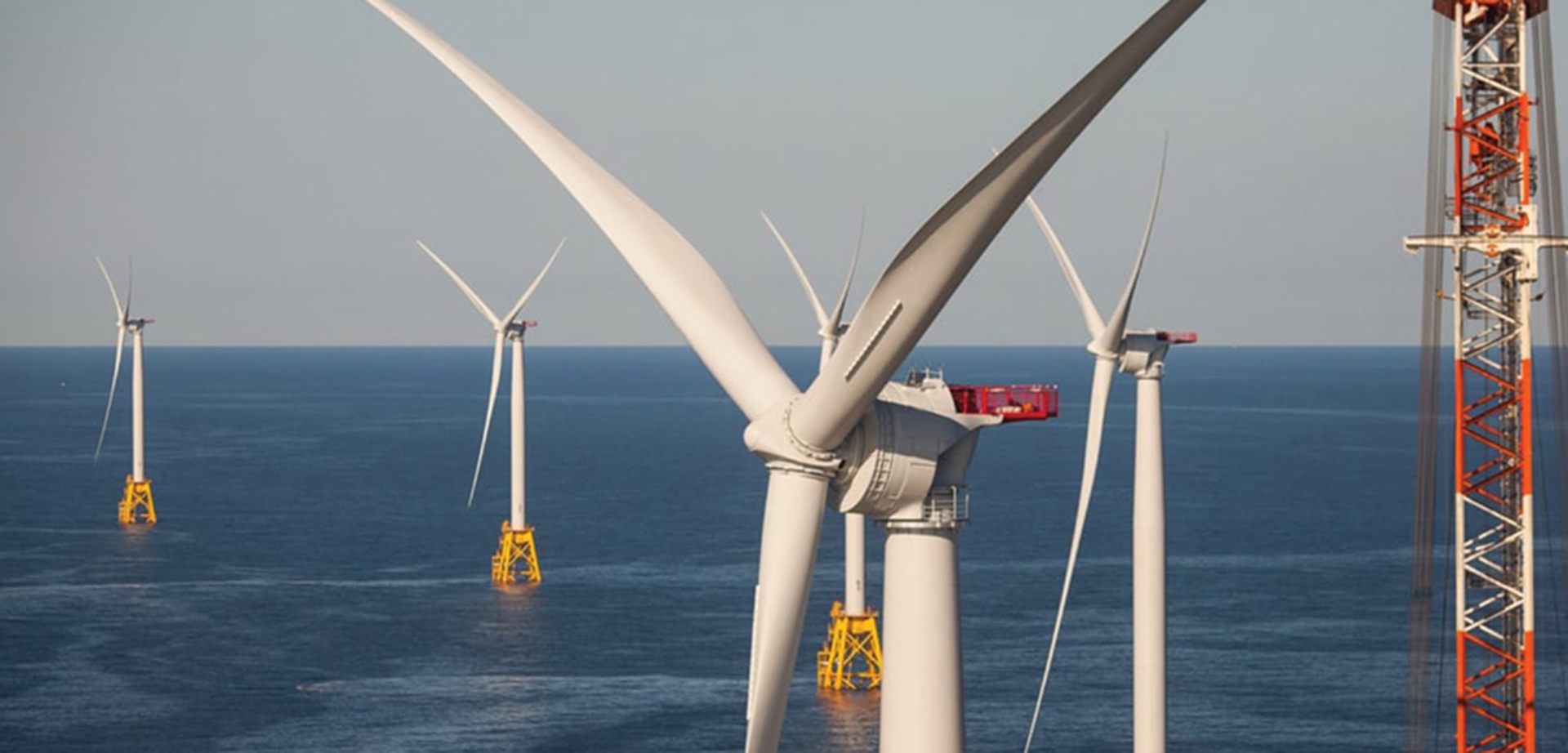Grid Design For Turbines Rankle Fishermen

Five wind turbines planned to be built off the Northeast coast will be aligned in a grid one nautical mile part from each another. Shell, EDP Renewables, Ørsted, Eversource Energy, Copenhagen Offshore Partners, Avangrid Renewables, and Equinor hold leases to build wind turbines off the coast of New England. There could be thousands of wind generators in the coming years. The entities agreed to work together to assure uniformity, according to a press release this week.
The companies, though, ask for a quid pro quo that no further shipping lanes be drawn within the grid. The request mentioned in the release was quickly lambasted by the Long Island Commercial Fishing Association.
“It doesn’t even begin to work,” said spokeswoman Bonnie Brady. “It’s putting lipstick on a pig.”
Ørsted/Eversource said in response the uniform layout is consistent with the requests of the region’s fisheries industry and other maritime users.
“Independent expert analysis provided to the United States Coast Guard confirmed that this uniform layout would provide for robust navigational safety and search and rescue capability by providing hundreds of transit corridors to accommodate the region’s vessel traffic,” the statement said.
Grover Fugate, executive director of the Rhode Island Coastal Resources Management Council, applauded the decision for common layout. He said the configuration “is exactly what his agency pressed” for with Vineyard Wind, the joint project between Copenhagen Offshore Partners and Avangrid Renewables, “to adopt nearly two years ago.”
Fugate said the decision by the wind farm developers to go with a standard east-west orientation with each turbine one nautical mile apart settles a lot of concerns about how fishing, navigation, and search and rescue operations can coexist with the developing offshore wind industry.
“I think it takes a lot of the issues off the table,” he said.
An analysis from W.F. Baird & Associates Ltd., a leading vessel and port safety consultant to the USCG, concluded, vessels up to 400-foot length can safely operate within the proposed layout. “And historic transit data shows vessels over this length tend to follow existing traffic separation schemes already outside” the New England wind energy area, according to the company.
Brady suspects Ørsted/Eversource is “trying to get something out ahead of the coast guard study.”
“We, the five New England offshore wind leaseholders, propose a collaborative regional layout for wind turbines across our respective U.S. Bureau of Ocean Energy Management leases, and urge the coast guard, BOEM, and other regulators and stakeholders to support adoption of this uniform turbine layout with no additional designated transit corridors,” the leaseholders wrote in a November 5 letter to Michael Emerson, director of marine transportation systems for the USCG.
Brady said numerous studies and a large amount of evidence has been submitted disputing the one-by-one nautical mile grid.
“We talked about two nautical miles between turbines and a four-nautical-mile grid,” she said. She also noted if bigger turbines are erected, those numbers would change.
She also balked at a proposal to have ships returning to port go around the wind farms.
“That’s 60 miles out of the way,” Brady said. “When you’re coming home in bad weather, you’re going to want to come through the lanes.”
Vineyard Wind, the $2.8-billion, 800-megawatt offshore wind project planned for the waters off Martha’s Vineyard, has been delayed and will not move forward on its anticipated timeline it has been anticipating due to decision by the U.S. Bureau of Ocean Energy Management to undertake a broad study of the potential impacts of offshore wind projects along the coast. The decision to launch a cumulative impacts analysis and hold up the approval of a key permit for Vineyard Wind until that analysis is complete will likely upend the supply chain, financing, and construction timeline for the project, according to the Earthwhile newsletter.
Ørsted and Eversource, set to deliver 300 megawatts of electricity to Connecticut from a wind farm also south of Martha’s Vineyard, said the decision does not shake their confidence in plans to bring offshore wind power to Connecticut by 2023.
Ørsted, formerly Danish Oil and Natural Gas, is the world’s largest offshore wind developer. The company in recent years sold off its oil and gas business and is converting its last coal-fired plant into a biomass plant in Denmark. The company bought Block Island Wind Farm developer Deepwater Wind last year for $500 million.
rmurphy@indyeastend.com



